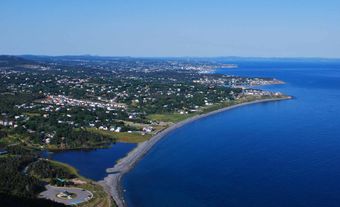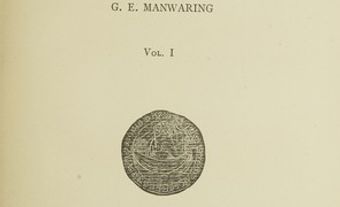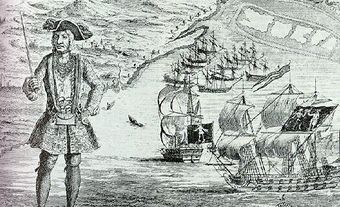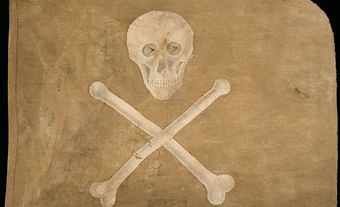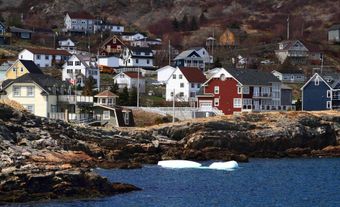Peter Easton, privateer, pirate (born c. 1570 in England; died c. 1620). Easton visited Newfoundland in 1602, a year before becoming a pirate. He returned to Newfoundland in 1612 and built a fort at Harbour Grace. Easton plundered Basque, Spanish, English, French and Portuguese ships on the Newfoundland coast, in Puerto Rico and at the Azores islands. When pardoned by the English King James I, Easton purchased a castle in Savoy where he lived a life of leisure.

Privateer in Newfoundland
Little is known about Easton’s early days. He is said to have been born to one of England’s old, respected families and grown up a gentleman.
Easton visited Newfoundland in 1602 as a privateer who had received a letter of marque from Queen Elizabeth I with the mission to protect an English fishing fleet. Newfoundland at that time was the world’s busiest and richest fishery with hundreds of ships from several European powers plying its waters each season. Stolen fish and goods could be easily and profitably sold in European and West African black markets. England claimed Newfoundland but could not protect it. Fishing ships carried armaments, but no European government could protect them. The situation was enticing to privateers who acted legally and pirates who were criminals acting without the sanction of their government. Both saw distance and anarchy as opportunities.
According to legend, it was on that 1602 trip to Newfoundland that Easton saved an Irish princess, Shiela Na Geira, from Dutch pirates. She married Gilbert Pike, one of Easton’s lieutenants, on the journey across the Atlantic and they settled at Mosquito (later Bristol’s Hope), Newfoundland, and became one of the colony’s founding English families.
In 1603, Elizabeth I’s successor, King James I, abolished all letters of marque, which led many privateers, including Easton, to become pirates. He became one of the most feared and successful pirates, looting ships in the English Channel. He held nominal control over 40 pirate ships. In 1610, Britain’s Lord Nottingham charged Henry Mainwaring with the task of capturing Easton. Rather than face Mainwaring, Easton sailed for Africa before heading to Newfoundland.
Easton Returns to Newfoundland
In 1612, Easton arrived with 10 ships at Harbour Grace, on Conception Bay, on Newfoundland’s southeast coast. He built a fort at the small community. The people of Harbour Grace were forced to support him with food, supplies and even recruits for his ships, as he refurbished and strengthened his fleet.
In 1612, Easton invited Richard Whitbourne, the vice admiral at St. John’s, to dine aboard his flagship; the 350-ton, three-masted frigate Happy Adventure. Easton then detained Whitbourne for 11 weeks. Whitbourne was released after agreeing to write to King James I with a recommendation to grant Easton a pardon.
Easton began a series of attacks against port communities on Newfoundland’s east coast. He stole two ships that he added to his fleet, then stole fish, gold, wine, weapons, and more from over 30 English, French, and Portuguese ships. One estimate has Easton kidnapping 100 men to become part of his crew while another has him kidnapping 1,500.
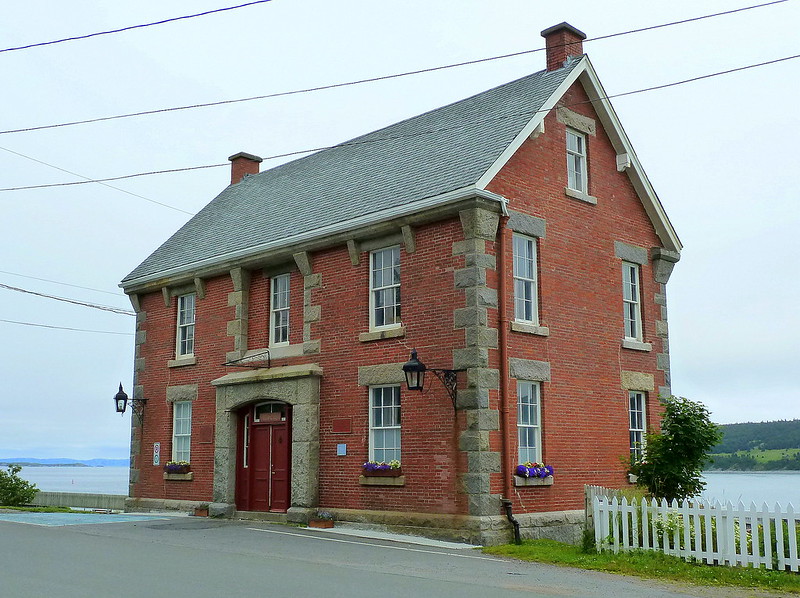
In 1614, Easton reportedly left Newfoundland to attack El Morro Castle in Puerto Rico. However, some experts have claimed that this story is based more in fiction than in fact. It was said that Easton captured the Spanish ship San Sebastian and a large amount of gold. Upon his return to Newfoundland, he discovered that French Basque pirates had captured his fort at Harbour Grace. Easton attacked and destroyed the Basque force, losing 47 men in the battle.
Easton moved his headquarters to Ferryland, on Newfoundland’s east coast, where he built a large house. Ferryland offered a deep and easily defended natural harbour. From his new base, Easton sent requests to King James I to be pardoned. Easton sent one of his crewmen, Captain Harvey, to Ireland to determine the status of his pardon.
While awaiting word of his pardon, Easton heard that Spanish galleons (see Sailing Ships) were transporting Spain’s annual supply of silver taken from West Indies mines. In 1614, Easton led 14 pirate ships and 500 men to the Azores islands where he captured the Spanish fleet and its silver. He took the captured Spanish ships and silver to Tunisia where he made a deal with its leader, the Bey of Tunis, who welcomed Easton as an honoured guest for nearly a year.
Did You Know?
Since 1993, the Rising Tide Theatre in Newfoundland has hosted The New Founde Lande Trinity Pageant (see Theatre). This outdoor event, complete with actors in historical dress, takes visitors on a journey through the history of the town of Trinity. In one scene, the audience meets Peter Easton and his pirate crew. The rest of the play features other historical figures and the people of Trinity’s past.
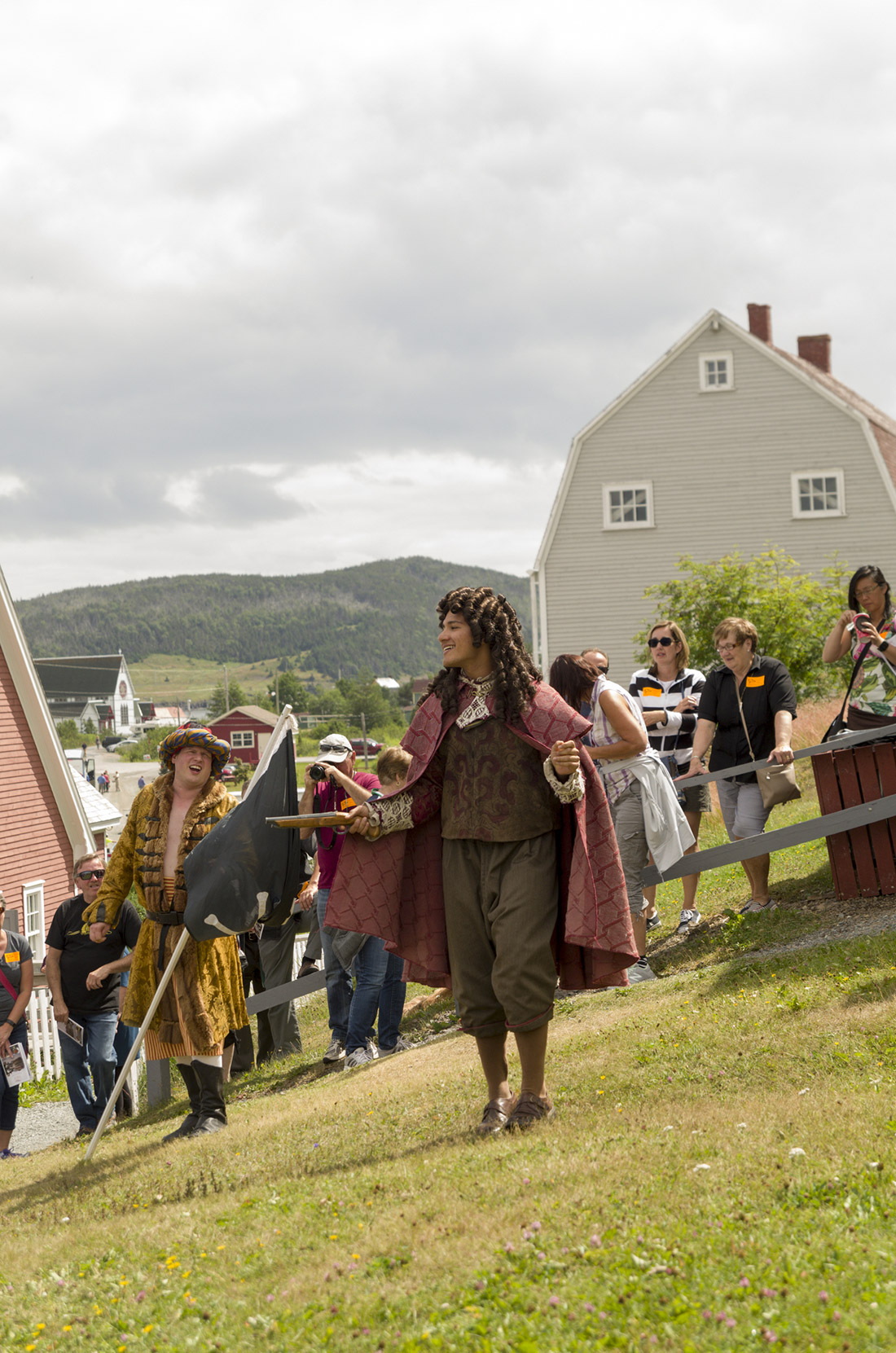
Life in Savoy
At about 40 years of age and enormously wealthy, Easton purchased an extravagant palace at Villefranche, Savoy, on the present-day French Riviera. He married a wealthy noblewoman, became known as the Marquis de Savoy, and enjoyed an opulent lifestyle. Easton died around 1620.

 Share on Facebook
Share on Facebook Share on X
Share on X Share by Email
Share by Email Share on Google Classroom
Share on Google Classroom



